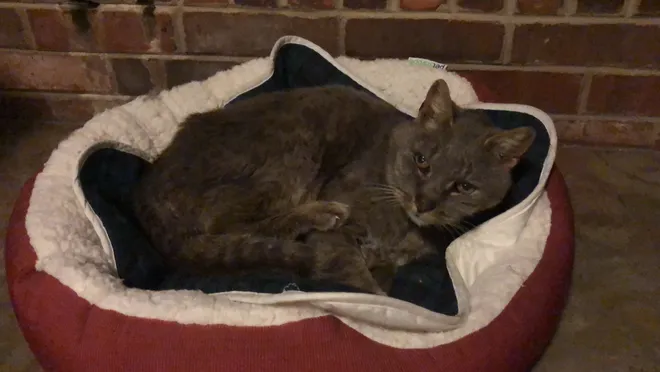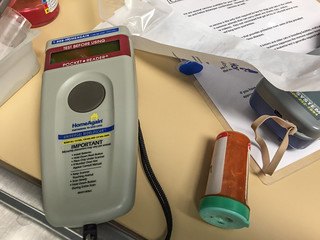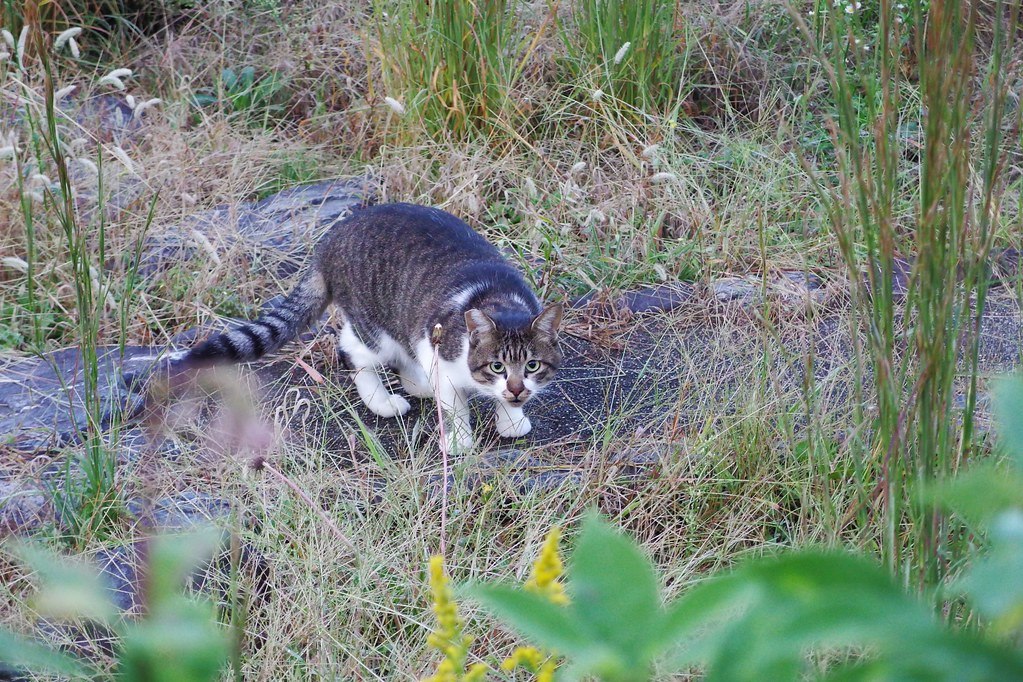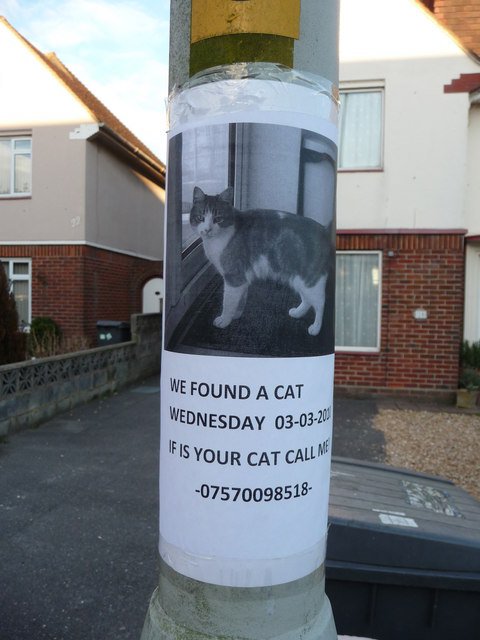Can you find a lost cat with a microchip? Consider the case of Ritz the cat. Here’s a story from the Delaware News Journal. Ritz disappeared in 2006, and his owner was sure he would never see his cat again. Then, just this week, after 16 years, a text arrived, saying a vet had found a microchip on an old cat about due for euthanasia.
Sixteen years later! Can you believe it? What kind of life did that cat lead, for 16 years? It’s too bad the cat can’t talk.
Ritz’s owner, Jason McHenry, had gone on a business trip when his roommate at home opened their apartment door and the cat ran out. Arriving home, McHenry searched for the cat, with no success. One neighbor said that, while driving nearby, someone flagged him down to tell him that a cat had just jumped out of his pickup bed.

McHenry posted fliers and called shelters every few days, with no success.
Jason married his girlfriend, Liz, whose cat, Bailey, had been Ritz’s best kitty friend. They finally decided they would never see Ritz again.
A Miraculous Moment
A young woman named Emily Russell had been feeding feral cats. Ritz joined the feeding group. Russell said she had been feeding eight outside cats, but Ritz, whom she called Tom, let her pet him and even came into her house.
He showed up one day with an injured paw and back leg, and Russell took him to a vet. He couldn’t walk; held up one paw. The young woman thought he’d been hit by a car.
At the vet’s, they found the microchip.
When the Lums Pond Animal Hospital called, the McHenrys found the message hard to believe. They went to the hospital for a reunion with their cat. He now rests with Liz’s mother until he recovers. The McHenrys said they couldn’t tell for sure if the cat recognized them, but he acted quite friendly.
Jason McHenry remarked, “He’s obviously had a long, eventful life, but he’ll be comfortable for whatever time he has left.”
Many thanks to Esteban Parra at Delaware Online for writing the article about Ritz.
It’s pretty easy to see how a microchip can help find a lost pet. These days, most shelters and vets have scanners, so they can check for a microchip. The microchip itself remains good for 25 years.

Have you considered these benefits of a microchip?
1) The microchip doesn’t break and won’t get lost.
It’s permanent and has its own identifying number exclusively for your pet. Perhaps you should add a tag to a collar having the phone number for the microchip database.
2) The procedure is quick and easy and doesn’t require anesthesia.
The chip has the approximate dimensions of a grain of rice. It’s inserted more like an injection, and goes between the shoulder blades.

3) It will last a lifetime.
4) Personal information remains private and secure.
The chip, when scanned, gives access to a set of numbers. These lead to a microchip company, who gives contact information to the vet and his staff.
5) Easy to update the information.
Just contact the microchip company to make any changes.
6) You only pay once.
Because the microchip requires no maintenance and never needs replacement, you only pay once. Average charges come in between $25.00 to $50.00.
7) The microchip remains an effective way to locate lost pets.
Hopefully, you won’t have to wait 16 years, as with Ritz, but it offers a good chance for reunion.
8) Most vets and shelters now have microchip scanners.
What Are Suggestions For Finding A Microchipped Lost Cat?
Statistics show that about 38% of microchipped cats end up reunited with the owner. Just make sure to keep the microchip company updated for any of your contact information that changes.

Follow these steps:
1) Contact the microchip company. Give the company the serial number of your cat’s microchip and let them know that he has gone missing.
2) Use common national microchip registries to report your missing pet. You will receive alerts if they find your cat.
3) Call local animal control and shelters. Provide them with information; let them know he has a microchip; provide the serial number. Let them know how to reach you with any updates.
4) Post fliers. Include a clear photo and ideas as to how to lure your cat. Post legible contact information. Place fliers in the area where you last saw your cat, as well as at any nearby veterinarian offices or shelters.

5) Place follow-up calls to shelters. Call them with weekly updates to check for any signs of your missing cat.
You must act right away if your cat goes missing. Let the microchip company know, and alert other registers as well. Hopefully you have added a collar with ID tags as well as the microchip. You can try anything that might help increase the chances of reuniting.
Perhaps you won’t have to wait 16 years for a reunion with your fur baby, but do realize that such miracles can happen. It’s great that a way exists to mark your kitty so that you might get him back if he disappears.
References I used for this post: delawareonline.com/videos/news/2022/04/28/ritz-cat-vanished-2006-moments-being-put-down-vet-found-his-owner/9566003002 healthcareforpets.com/article/8-benefits-of-microchipping-your-pet/ hepper.com/how-to-find-lost-cat-with-microchip/


Great idea. Have thought about it, but haven’t done it yet. They go back to the vet in a couple months.
Think I may do it.
Thanks
I think it’s a really good idea. At least it offers a bit more hope that you will have your lost cat returned to you.